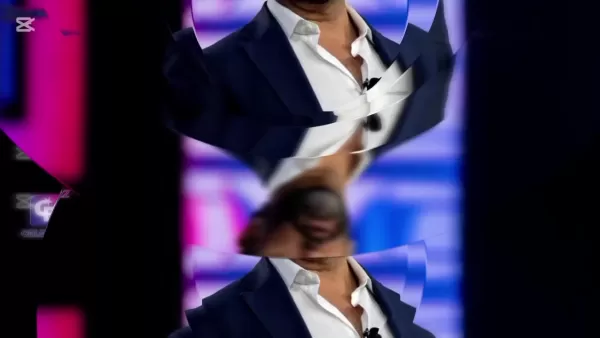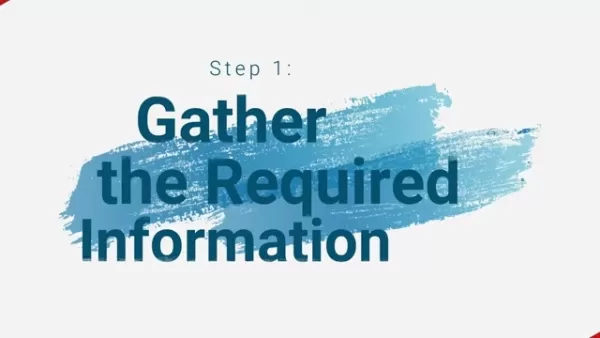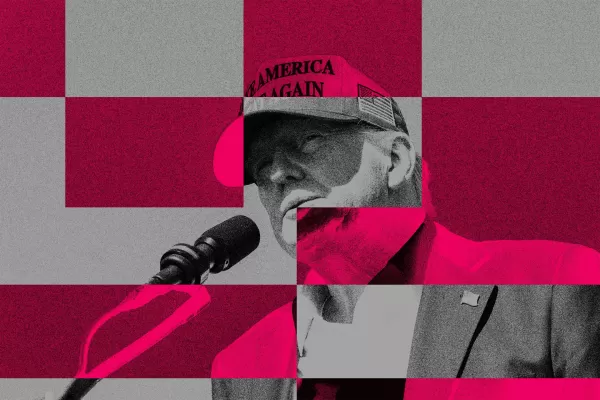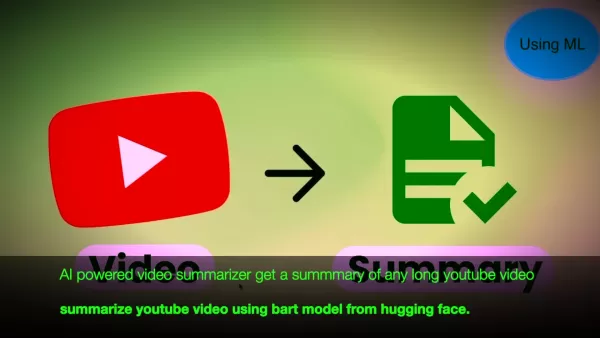Deepfake Audio Scandal Unveils Dangers of AI-Generated Content
The advent of artificial intelligence has ushered in a wave of remarkable innovations, yet it's not without its pitfalls. Among these, deepfakes—AI-generated content that can deceptively replicate real individuals and events—pose a significant challenge. Recently, a deepfake audio clip supposedly featuring Donald Trump Jr. stirred up a storm online, spotlighting the potent and potentially harmful nature of this technology. This article dives into the specifics of the incident, examines the broader implications of deepfakes, and highlights the pressing need for public awareness and tighter regulations.
Key Points
- A deepfake audio clip, purportedly of Donald Trump Jr., sparked significant online controversy.
- The audio included controversial remarks about Ukraine and Russia, triggering widespread outrage.
- Media forensics experts confirmed the audio was artificially generated using advanced AI technology.
- The incident underscores the growing sophistication of AI and its potential for misuse.
- Platforms like Spotify and Rumble debunked the audio's authenticity.
- The event highlights the urgent need for public education about deepfakes and their potential dangers.
- Stronger regulations and more effective detection tools are crucial to combat the spread of misinformation.
- This incident serves as a stark reminder to critically assess digital content before trusting it.
Understanding the Deepfake Audio Incident
What is the Donald Trump Jr. Deepfake Audio?
An audio clip surfaced online, seemingly featuring Donald Trump Jr. making provocative statements about Ukraine and Russia. The audio, which eerily mimicked Trump Jr.'s voice, quickly spread across social media, igniting fierce debates. It suggested that arming Russia might be more advantageous than aiding Ukraine, a claim that caught the attention of political commentators and influencers. Initially, many believed the audio to be genuine due to the advanced AI technology behind it. However, media forensics experts, upon thorough investigation, revealed it to be a meticulously crafted deepfake. This discovery sent ripples through the internet, emphasizing the deceptive potential of AI-generated content.
How the Deepfake Audio Spread Online
The deepfake audio clip spread rapidly across platforms like Twitter, Facebook, and YouTube. It amassed millions of views, shares, and comments, demonstrating the power of social media in disseminating information, both true and false. The outrage it sparked fueled further sharing and discussion, with political commentators and influencers jumping into the fray. This incident was a vivid illustration of the echo chamber effect on social media, where misinformation can rapidly spread and reinforce existing biases.

Media Forensics Exposes the Deepfake
The authenticity of the deepfake audio was soon challenged by media forensics experts. Hany Farid, a prominent figure in the field, conducted an in-depth analysis using advanced techniques to detect manipulation. His findings, supported by AI detection models, confirmed the audio as an AI-generated simulation. This exposure served as a wake-up call, emphasizing the importance of critical thinking and media literacy in the digital age. It also underscored the necessity for robust detection tools and regulations to fight misinformation.

The Response from Platforms and Figures
Platforms Debunk the Audio
Platforms such as Spotify and Rumble, where Donald Trump Jr. hosts his podcast, quickly addressed the controversy. Spotify debunked claims that the audio was from Trump Jr.’s podcast, confirming the episode never existed on their platform. Rumble also declared the audio fake, likely generated by AI. These prompt responses helped curb the spread of misinformation and protect Trump Jr.'s reputation. However, the incident highlighted the need for platforms to be more vigilant in monitoring and removing deepfakes.

Donald Trump Jr.'s Response
Donald Trump Jr. himself took to social media to denounce the audio as "100% fake" and criticized the spread of misinformation. His direct response reassured his supporters and countered the false narrative. This also underscored the importance of public figures taking responsibility for their online presence and actively combating misinformation.

Political Implications and the Spread of Disinformation
The incident gained further traction when an official Democratic account briefly shared the deepfake audio without verifying its authenticity. This incident highlighted the risk of even well-intentioned individuals and organizations unwittingly spreading misinformation, particularly in politically charged situations. The rapid spread of such content raises serious concerns about the integrity of the democratic process, as deepfakes can be used to smear candidates, sow discord, and undermine public trust. Addressing this threat requires a multifaceted approach, including public education, media literacy, and stronger regulations.

Detecting Deepfakes: Tips and Tools
Identifying Deepfake Audio
Detecting deepfake audio can be tricky, but here are some techniques and tools to help:
- Listen for inconsistencies: Deepfakes may have subtle inconsistencies in tone, pacing, or background noise.
- Check for unnatural pauses or transitions: AI-generated audio might contain unnatural pauses or abrupt transitions.
- Consult media forensics experts: If you suspect an audio clip is a deepfake, seek help from media forensics experts who can analyze it.
- Use AI detection tools: There are online AI tools that can analyze audio files and identify potential deepfakes.
Verifying Information Online
In an era rife with deepfakes and misinformation, it's crucial to be vigilant about the information you consume online. Here are some tips for verification:
- Check the source: Verify the credibility of the source before sharing information. Look for established news organizations or reputable experts.
- Cross-reference information: Verify information by comparing it across multiple sources.
- Be wary of emotional appeals: Deepfakes often exploit emotions to manipulate viewers. Be cautious of content that evokes strong feelings.
- Look for evidence of manipulation: Watch for signs of manipulation, like inconsistencies in audio or video, or unnatural editing.
AI-Generated Content: Weighing the Benefits and Risks
Pros
- AI can automate tasks and streamline workflows.
- AI can personalize experiences and tailor content to individual preferences.
- AI can analyze vast datasets and identify patterns beyond human capability.
- AI can enhance decision-making and reduce errors.
- AI can open new avenues for innovation and creativity.
Cons
- AI can create deepfakes and spread misinformation.
- AI can reinforce existing biases and perpetuate discrimination.
- AI can displace workers and worsen economic inequality.
- AI can pose security risks and be used for malicious purposes.
- AI raises ethical concerns about privacy, autonomy, and accountability.
Frequently Asked Questions
What is a deepfake?
A deepfake is AI-generated media content (audio or video) that manipulates reality to convincingly portray someone as doing or saying something they did not. Deepfakes use sophisticated AI techniques, like deep learning, to create realistic forgeries.
How are deepfakes created?
Deepfakes are crafted using AI techniques, such as deep learning, to analyze and synthesize media. The process involves training a neural network on large datasets of images or audio to capture the unique traits of an individual. Once trained, the network can generate new content that mimics the person's appearance, voice, or behavior.
What are the potential dangers of deepfakes?
Deepfakes pose numerous risks, including:
- Misinformation: They can spread false or misleading information, with serious consequences for individuals, organizations, and society.
- Political manipulation: Deepfakes can influence political opinions, undermine elections, and sow discord.
- Reputation damage: They can harm the reputation of individuals or organizations by portraying them negatively.
- Fraud: Deepfakes can be used to commit fraud, such as impersonating someone to access financial accounts or sensitive information.
How can I protect myself from deepfakes?
Protecting yourself from deepfakes requires a mix of critical thinking, media literacy, and awareness. Here are some tips:
- Be skeptical: Don't automatically trust everything you see or hear online. Question the source, message, and intent behind the content.
- Verify information: Cross-reference information with multiple reputable sources to ensure accuracy.
- Be wary of emotional appeals: Deepfakes often use emotions to manipulate viewers. Be cautious of content that evokes strong feelings.
- Report suspected deepfakes: If you encounter content you believe is a deepfake, report it to the platform where you found it.
Related Questions
What regulations are in place to address deepfakes?
While specific regulations for deepfakes are still developing, existing laws against defamation, impersonation, fraud, and copyright infringement can be applied. Some countries and regions are also crafting new legislation to regulate deepfakes and synthetic media. Additionally, platforms like Facebook, Google, and Twitter have policies to detect and remove deepfakes that violate their terms of service.
What is being done to improve deepfake detection technologies?
Considerable efforts are underway to enhance deepfake detection technologies. Researchers are creating new AI models to analyze audio and video for signs of manipulation, trained on vast datasets of real and fake content. Media forensics experts are also developing new techniques to examine the technical characteristics of content, such as compression artifacts, lighting, and audio frequencies, to identify manipulation.
What is the role of public education in combating deepfakes?
Public education is vital in combating deepfakes. By informing the public about the dangers of deepfakes and how to spot them, we empower individuals to make informed decisions about online content. Media literacy initiatives, teaching critical evaluation of media, are essential. Public education campaigns can also raise awareness about the ethical considerations of deepfakes and promote responsible AI use.
Related article
 AI-Powered Cover Letters: Expert Guide for Journal Submissions
In today's competitive academic publishing environment, crafting an effective cover letter can make the crucial difference in your manuscript's acceptance. Discover how AI-powered tools like ChatGPT can streamline this essential task, helping you cre
AI-Powered Cover Letters: Expert Guide for Journal Submissions
In today's competitive academic publishing environment, crafting an effective cover letter can make the crucial difference in your manuscript's acceptance. Discover how AI-powered tools like ChatGPT can streamline this essential task, helping you cre
 US to Sanction Foreign Officials Over Social Media Regulations
US Takes Stand Against Global Digital Content Regulations
The State Department issued a sharp diplomatic rebuke this week targeting European digital governance policies, signaling escalating tensions over control of online platforms. Secretary Marco
US to Sanction Foreign Officials Over Social Media Regulations
US Takes Stand Against Global Digital Content Regulations
The State Department issued a sharp diplomatic rebuke this week targeting European digital governance policies, signaling escalating tensions over control of online platforms. Secretary Marco
 Ultimate Guide to AI-Powered YouTube Video Summarizers
In our information-rich digital landscape, AI-powered YouTube video summarizers have become indispensable for efficient content consumption. This in-depth guide explores how to build a sophisticated summarization tool using cutting-edge NLP technolog
Comments (20)
0/200
Ultimate Guide to AI-Powered YouTube Video Summarizers
In our information-rich digital landscape, AI-powered YouTube video summarizers have become indispensable for efficient content consumption. This in-depth guide explores how to build a sophisticated summarization tool using cutting-edge NLP technolog
Comments (20)
0/200
![MateoAdams]() MateoAdams
MateoAdams
 April 25, 2025 at 10:42:03 PM EDT
April 25, 2025 at 10:42:03 PM EDT
딥페이크 오디오? 무서운 거죠! 이 도구 덕분에 AI 생성 콘텐츠의 위험성을 깨달았어요. 스캔들이 경종을 울렸어요. 리스크를 이해하는 데 정말 유용하지만, 솔직히 좀 무섭기도 해요. 이런 도구가 더 필요해요, 인식을 유지하기 위해! 😱


 0
0
![MatthewCarter]() MatthewCarter
MatthewCarter
 April 25, 2025 at 5:43:15 PM EDT
April 25, 2025 at 5:43:15 PM EDT
This deepfake audio scandal really opened my eyes to the dangers of AI! It's scary how realistic these fakes can be. I'm all for tech advancements, but we need better safeguards, pronto! Anyone else freaked out by this? 😱


 0
0
![CarlGarcia]() CarlGarcia
CarlGarcia
 April 25, 2025 at 7:29:46 AM EDT
April 25, 2025 at 7:29:46 AM EDT
Áudio deepfake? Coisa assustadora! Esta ferramenta realmente me abriu os olhos para os perigos do conteúdo gerado por IA. O escândalo foi um alerta. É super útil para entender os riscos, mas cara, também é meio assustador. Precisamos de mais ferramentas como esta para manter a consciência! 😱


 0
0
![JustinJackson]() JustinJackson
JustinJackson
 April 24, 2025 at 12:09:55 PM EDT
April 24, 2025 at 12:09:55 PM EDT
Esse escândalo de áudio deepfake realmente me fez perceber os perigos da IA! É assustador como esses falsos podem ser realistas. Sou a favor dos avanços tecnológicos, mas precisamos de melhores salvaguardas, rápido! Alguém mais está assustado com isso? 😱


 0
0
![AndrewGarcía]() AndrewGarcía
AndrewGarcía
 April 24, 2025 at 7:29:39 AM EDT
April 24, 2025 at 7:29:39 AM EDT
O escândalo do áudio deepfake é um verdadeiro abrir de olhos! É assustador como esses áudios gerados por IA podem ser realistas. Estou impressionado, mas também um pouco preocupado com o potencial de abuso. Precisamos de melhores regulamentações, rápido! 😱


 0
0
![JosephScott]() JosephScott
JosephScott
 April 24, 2025 at 3:20:44 AM EDT
April 24, 2025 at 3:20:44 AM EDT
The deepfake audio scandal is a real eye-opener! It's scary how realistic these AI-generated audios can be. I'm impressed but also a bit worried about the potential misuse. We need better regulations, pronto! 😱


 0
0
The advent of artificial intelligence has ushered in a wave of remarkable innovations, yet it's not without its pitfalls. Among these, deepfakes—AI-generated content that can deceptively replicate real individuals and events—pose a significant challenge. Recently, a deepfake audio clip supposedly featuring Donald Trump Jr. stirred up a storm online, spotlighting the potent and potentially harmful nature of this technology. This article dives into the specifics of the incident, examines the broader implications of deepfakes, and highlights the pressing need for public awareness and tighter regulations.
Key Points
- A deepfake audio clip, purportedly of Donald Trump Jr., sparked significant online controversy.
- The audio included controversial remarks about Ukraine and Russia, triggering widespread outrage.
- Media forensics experts confirmed the audio was artificially generated using advanced AI technology.
- The incident underscores the growing sophistication of AI and its potential for misuse.
- Platforms like Spotify and Rumble debunked the audio's authenticity.
- The event highlights the urgent need for public education about deepfakes and their potential dangers.
- Stronger regulations and more effective detection tools are crucial to combat the spread of misinformation.
- This incident serves as a stark reminder to critically assess digital content before trusting it.
Understanding the Deepfake Audio Incident
What is the Donald Trump Jr. Deepfake Audio?
An audio clip surfaced online, seemingly featuring Donald Trump Jr. making provocative statements about Ukraine and Russia. The audio, which eerily mimicked Trump Jr.'s voice, quickly spread across social media, igniting fierce debates. It suggested that arming Russia might be more advantageous than aiding Ukraine, a claim that caught the attention of political commentators and influencers. Initially, many believed the audio to be genuine due to the advanced AI technology behind it. However, media forensics experts, upon thorough investigation, revealed it to be a meticulously crafted deepfake. This discovery sent ripples through the internet, emphasizing the deceptive potential of AI-generated content.
How the Deepfake Audio Spread Online
The deepfake audio clip spread rapidly across platforms like Twitter, Facebook, and YouTube. It amassed millions of views, shares, and comments, demonstrating the power of social media in disseminating information, both true and false. The outrage it sparked fueled further sharing and discussion, with political commentators and influencers jumping into the fray. This incident was a vivid illustration of the echo chamber effect on social media, where misinformation can rapidly spread and reinforce existing biases.

Media Forensics Exposes the Deepfake
The authenticity of the deepfake audio was soon challenged by media forensics experts. Hany Farid, a prominent figure in the field, conducted an in-depth analysis using advanced techniques to detect manipulation. His findings, supported by AI detection models, confirmed the audio as an AI-generated simulation. This exposure served as a wake-up call, emphasizing the importance of critical thinking and media literacy in the digital age. It also underscored the necessity for robust detection tools and regulations to fight misinformation.

The Response from Platforms and Figures
Platforms Debunk the Audio
Platforms such as Spotify and Rumble, where Donald Trump Jr. hosts his podcast, quickly addressed the controversy. Spotify debunked claims that the audio was from Trump Jr.’s podcast, confirming the episode never existed on their platform. Rumble also declared the audio fake, likely generated by AI. These prompt responses helped curb the spread of misinformation and protect Trump Jr.'s reputation. However, the incident highlighted the need for platforms to be more vigilant in monitoring and removing deepfakes.

Donald Trump Jr.'s Response
Donald Trump Jr. himself took to social media to denounce the audio as "100% fake" and criticized the spread of misinformation. His direct response reassured his supporters and countered the false narrative. This also underscored the importance of public figures taking responsibility for their online presence and actively combating misinformation.

Political Implications and the Spread of Disinformation
The incident gained further traction when an official Democratic account briefly shared the deepfake audio without verifying its authenticity. This incident highlighted the risk of even well-intentioned individuals and organizations unwittingly spreading misinformation, particularly in politically charged situations. The rapid spread of such content raises serious concerns about the integrity of the democratic process, as deepfakes can be used to smear candidates, sow discord, and undermine public trust. Addressing this threat requires a multifaceted approach, including public education, media literacy, and stronger regulations.

Detecting Deepfakes: Tips and Tools
Identifying Deepfake Audio
Detecting deepfake audio can be tricky, but here are some techniques and tools to help:
- Listen for inconsistencies: Deepfakes may have subtle inconsistencies in tone, pacing, or background noise.
- Check for unnatural pauses or transitions: AI-generated audio might contain unnatural pauses or abrupt transitions.
- Consult media forensics experts: If you suspect an audio clip is a deepfake, seek help from media forensics experts who can analyze it.
- Use AI detection tools: There are online AI tools that can analyze audio files and identify potential deepfakes.
Verifying Information Online
In an era rife with deepfakes and misinformation, it's crucial to be vigilant about the information you consume online. Here are some tips for verification:
- Check the source: Verify the credibility of the source before sharing information. Look for established news organizations or reputable experts.
- Cross-reference information: Verify information by comparing it across multiple sources.
- Be wary of emotional appeals: Deepfakes often exploit emotions to manipulate viewers. Be cautious of content that evokes strong feelings.
- Look for evidence of manipulation: Watch for signs of manipulation, like inconsistencies in audio or video, or unnatural editing.
AI-Generated Content: Weighing the Benefits and Risks
Pros
- AI can automate tasks and streamline workflows.
- AI can personalize experiences and tailor content to individual preferences.
- AI can analyze vast datasets and identify patterns beyond human capability.
- AI can enhance decision-making and reduce errors.
- AI can open new avenues for innovation and creativity.
Cons
- AI can create deepfakes and spread misinformation.
- AI can reinforce existing biases and perpetuate discrimination.
- AI can displace workers and worsen economic inequality.
- AI can pose security risks and be used for malicious purposes.
- AI raises ethical concerns about privacy, autonomy, and accountability.
Frequently Asked Questions
What is a deepfake?
A deepfake is AI-generated media content (audio or video) that manipulates reality to convincingly portray someone as doing or saying something they did not. Deepfakes use sophisticated AI techniques, like deep learning, to create realistic forgeries.
How are deepfakes created?
Deepfakes are crafted using AI techniques, such as deep learning, to analyze and synthesize media. The process involves training a neural network on large datasets of images or audio to capture the unique traits of an individual. Once trained, the network can generate new content that mimics the person's appearance, voice, or behavior.
What are the potential dangers of deepfakes?
Deepfakes pose numerous risks, including:
- Misinformation: They can spread false or misleading information, with serious consequences for individuals, organizations, and society.
- Political manipulation: Deepfakes can influence political opinions, undermine elections, and sow discord.
- Reputation damage: They can harm the reputation of individuals or organizations by portraying them negatively.
- Fraud: Deepfakes can be used to commit fraud, such as impersonating someone to access financial accounts or sensitive information.
How can I protect myself from deepfakes?
Protecting yourself from deepfakes requires a mix of critical thinking, media literacy, and awareness. Here are some tips:
- Be skeptical: Don't automatically trust everything you see or hear online. Question the source, message, and intent behind the content.
- Verify information: Cross-reference information with multiple reputable sources to ensure accuracy.
- Be wary of emotional appeals: Deepfakes often use emotions to manipulate viewers. Be cautious of content that evokes strong feelings.
- Report suspected deepfakes: If you encounter content you believe is a deepfake, report it to the platform where you found it.
Related Questions
What regulations are in place to address deepfakes?
While specific regulations for deepfakes are still developing, existing laws against defamation, impersonation, fraud, and copyright infringement can be applied. Some countries and regions are also crafting new legislation to regulate deepfakes and synthetic media. Additionally, platforms like Facebook, Google, and Twitter have policies to detect and remove deepfakes that violate their terms of service.
What is being done to improve deepfake detection technologies?
Considerable efforts are underway to enhance deepfake detection technologies. Researchers are creating new AI models to analyze audio and video for signs of manipulation, trained on vast datasets of real and fake content. Media forensics experts are also developing new techniques to examine the technical characteristics of content, such as compression artifacts, lighting, and audio frequencies, to identify manipulation.
What is the role of public education in combating deepfakes?
Public education is vital in combating deepfakes. By informing the public about the dangers of deepfakes and how to spot them, we empower individuals to make informed decisions about online content. Media literacy initiatives, teaching critical evaluation of media, are essential. Public education campaigns can also raise awareness about the ethical considerations of deepfakes and promote responsible AI use.
 AI-Powered Cover Letters: Expert Guide for Journal Submissions
In today's competitive academic publishing environment, crafting an effective cover letter can make the crucial difference in your manuscript's acceptance. Discover how AI-powered tools like ChatGPT can streamline this essential task, helping you cre
AI-Powered Cover Letters: Expert Guide for Journal Submissions
In today's competitive academic publishing environment, crafting an effective cover letter can make the crucial difference in your manuscript's acceptance. Discover how AI-powered tools like ChatGPT can streamline this essential task, helping you cre
 US to Sanction Foreign Officials Over Social Media Regulations
US Takes Stand Against Global Digital Content Regulations
The State Department issued a sharp diplomatic rebuke this week targeting European digital governance policies, signaling escalating tensions over control of online platforms. Secretary Marco
US to Sanction Foreign Officials Over Social Media Regulations
US Takes Stand Against Global Digital Content Regulations
The State Department issued a sharp diplomatic rebuke this week targeting European digital governance policies, signaling escalating tensions over control of online platforms. Secretary Marco
 Ultimate Guide to AI-Powered YouTube Video Summarizers
In our information-rich digital landscape, AI-powered YouTube video summarizers have become indispensable for efficient content consumption. This in-depth guide explores how to build a sophisticated summarization tool using cutting-edge NLP technolog
Ultimate Guide to AI-Powered YouTube Video Summarizers
In our information-rich digital landscape, AI-powered YouTube video summarizers have become indispensable for efficient content consumption. This in-depth guide explores how to build a sophisticated summarization tool using cutting-edge NLP technolog
 April 25, 2025 at 10:42:03 PM EDT
April 25, 2025 at 10:42:03 PM EDT
딥페이크 오디오? 무서운 거죠! 이 도구 덕분에 AI 생성 콘텐츠의 위험성을 깨달았어요. 스캔들이 경종을 울렸어요. 리스크를 이해하는 데 정말 유용하지만, 솔직히 좀 무섭기도 해요. 이런 도구가 더 필요해요, 인식을 유지하기 위해! 😱


 0
0
 April 25, 2025 at 5:43:15 PM EDT
April 25, 2025 at 5:43:15 PM EDT
This deepfake audio scandal really opened my eyes to the dangers of AI! It's scary how realistic these fakes can be. I'm all for tech advancements, but we need better safeguards, pronto! Anyone else freaked out by this? 😱


 0
0
 April 25, 2025 at 7:29:46 AM EDT
April 25, 2025 at 7:29:46 AM EDT
Áudio deepfake? Coisa assustadora! Esta ferramenta realmente me abriu os olhos para os perigos do conteúdo gerado por IA. O escândalo foi um alerta. É super útil para entender os riscos, mas cara, também é meio assustador. Precisamos de mais ferramentas como esta para manter a consciência! 😱


 0
0
 April 24, 2025 at 12:09:55 PM EDT
April 24, 2025 at 12:09:55 PM EDT
Esse escândalo de áudio deepfake realmente me fez perceber os perigos da IA! É assustador como esses falsos podem ser realistas. Sou a favor dos avanços tecnológicos, mas precisamos de melhores salvaguardas, rápido! Alguém mais está assustado com isso? 😱


 0
0
 April 24, 2025 at 7:29:39 AM EDT
April 24, 2025 at 7:29:39 AM EDT
O escândalo do áudio deepfake é um verdadeiro abrir de olhos! É assustador como esses áudios gerados por IA podem ser realistas. Estou impressionado, mas também um pouco preocupado com o potencial de abuso. Precisamos de melhores regulamentações, rápido! 😱


 0
0
 April 24, 2025 at 3:20:44 AM EDT
April 24, 2025 at 3:20:44 AM EDT
The deepfake audio scandal is a real eye-opener! It's scary how realistic these AI-generated audios can be. I'm impressed but also a bit worried about the potential misuse. We need better regulations, pronto! 😱


 0
0





























